Mt. Gassan
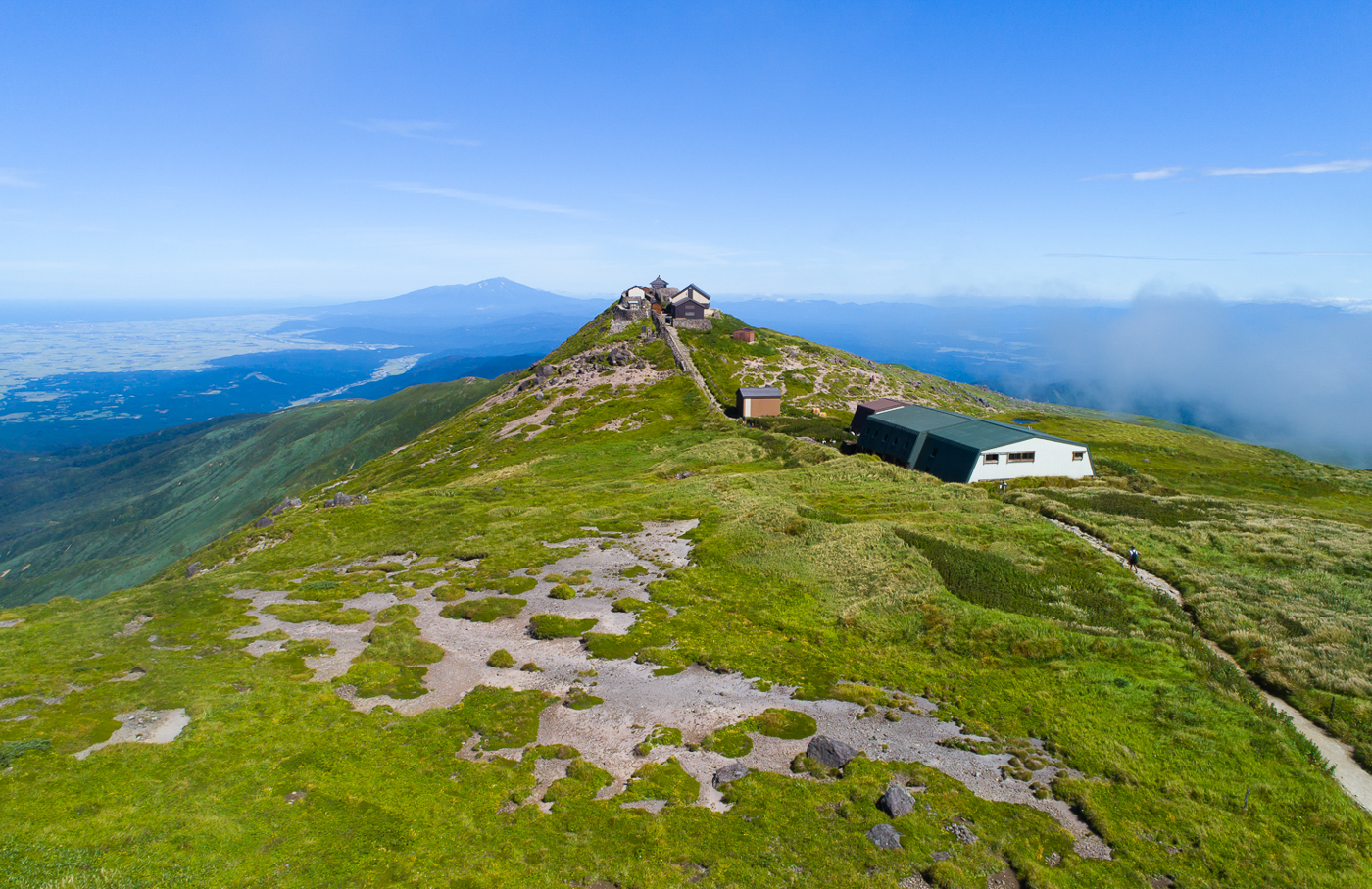
Mount Gassan, the oldest and tallest mountain of the Dewa Sanzan, stands at the core of its mountain worship. It is traditionally the second peak visited during a Dewa Sanzan pilgrimage, as a symbolic journey into the past and afterlife of one’s present self and opening of opportunity for rebirth upon the conclusion of one’s pilgrimage at Mount Yudono.
Although Mount Haguro is often thought of when referencing the Dewa Sanzan, the oldest traces of writing about these mountains (712-773 CE) is about the Gassan Shrine at the peak of Mount Gassan. The Shinto deity worshipped on Mt. Gassan is Tsukuyomi no Mikoto (月読命), the incarnation of the moon. The Bodhisattba revered on Mt. Gassan is Amithaba or in Japanese Amida Nyorai (阿弥陀如来), the Buddha of the Pura Land of Buddhism.
Mount Gassan is also popular with secular nature enthusiasts and hikers – it is counted among the Hyakumeizan 100 Famous Mountains of Japan and is home to a number of rare alpine plants. Whether hiking for spiritual or secular reasons, all are awestruck by the 360-degree views of the surrounding mountains and vast plains of the Shonai Region afforded from the summit of Gassan.
Who is Tsukuyomi no Mikoto?
The founding god of Japan, Izanagi, was married, but his wife died giving birth to the Fire god. When Izanagi visited his beloved wife in the afterworld, his soul became stained by the impure view of his wife’s rotten corpse. To cleanse his sins away, he bathed in holy water. Upon cleaning his left eye, the Sun Goddess, Amaterasu, was born; when he cleaned his right eye, the Moon God, Tsukiyomi was born. Tsukuyomi was ordered to reign over the world of the night—and the world of the Dead.
Later, Tsukuyomi went on to kill the goddess of crops, Ukemochi no kami. Amaterasu became angry at her brother and punished Tsukuyomi by ordering him to live apart from her. This was the beginning of day and night separation. In order to make amends, Tsukuyomi promised to help agriculture on Earth.
This solidified the link between the god of the moon and crops and food. Tsukuyomi is forever thought of as the god that rules over the night, the world of the Dead, and the one that protects agriculture.
Points of Interest
Meadows and marshes of Midagahara (弥陀ヶ原湿原)
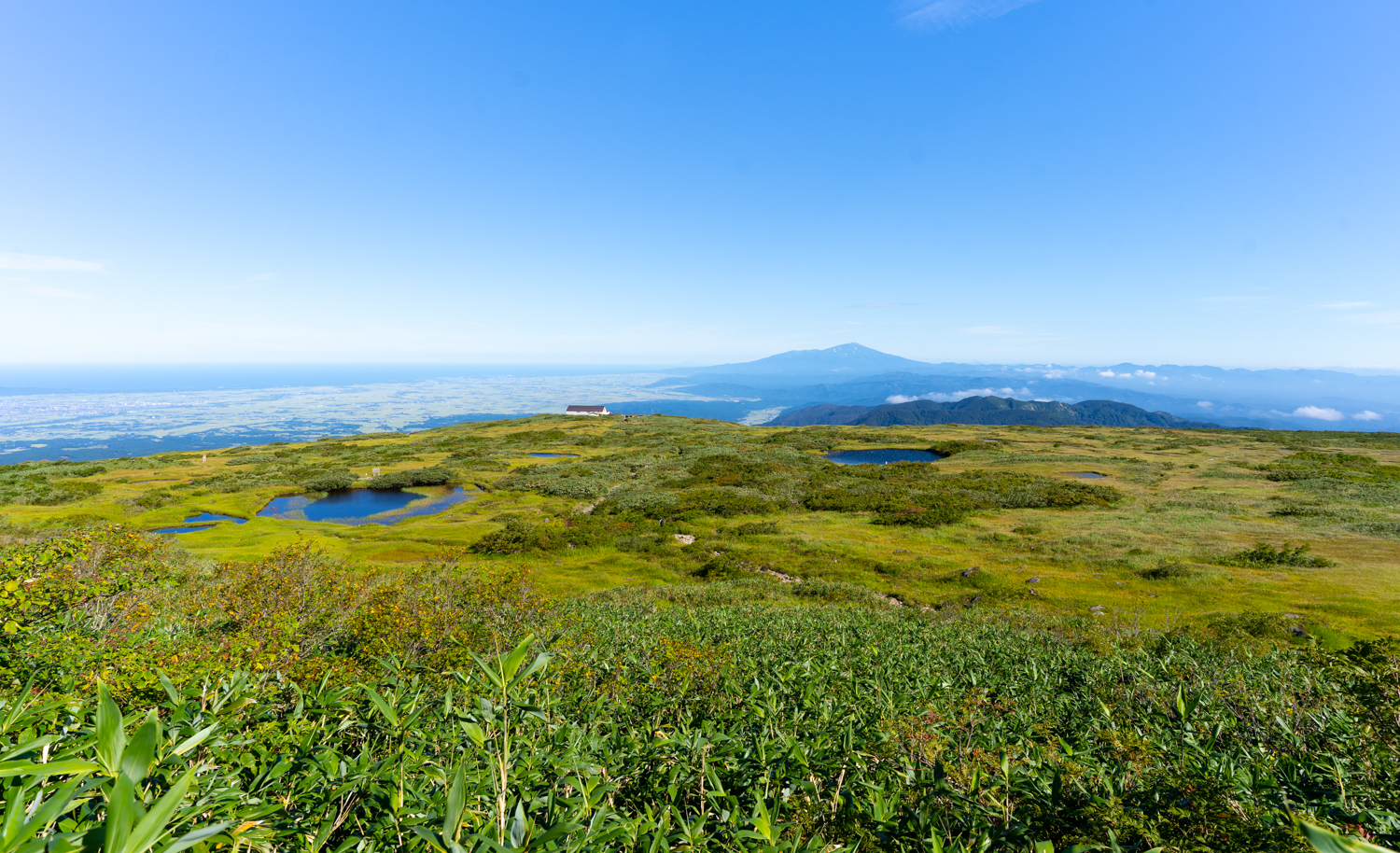
Ancient texts suggest that these natural alpine meadows symbolized fields of the gods, where rice was cultivated as offerings to deities. In those ancient times the area was known as Midahara (lit. “The Fields of the Gods”). In the Edo-period, widely read texts described a bronze statue of Amida Nyorai ehshrined on a rock peak near the meadows, which led to the name of the area transforming into Midagahara (lit. “The Fields of Amida”).
Midagahara’s wetland areas are likened to celestial flower fields. They are adorned with alpine flora such as the yellow Nikko kisuge day lily and the autumn-blooming Miyama gentian. In autumn, the red-tinted vegetation around the Midahara ponds resembles golden rice fields, seen by the faithful as a representation of agricultural abundance. Traditionally, the presence and health of certain plants in these meadows were used to predict harvest yields, underscoring the significance of Midagahara as a sacred site related to agriculture.
Midahara Shrine (御田原神社)
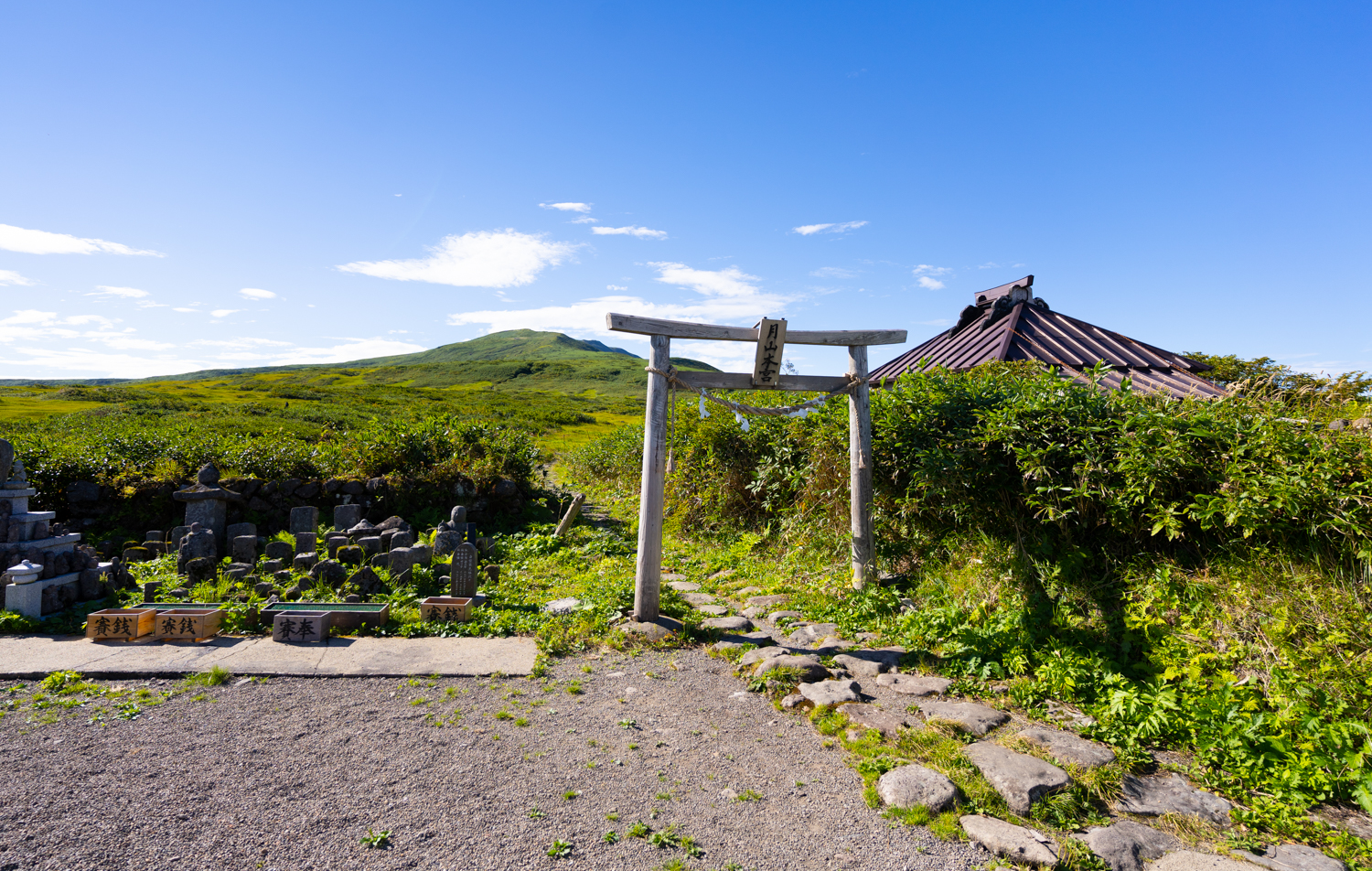
Also called Gassan Nananomiya, the structures of Midahara Shrine are built using sacred materials taken from Gassan Shrine’s main shrine during its shikinen sengū reconstruction, a ritual carried out every 20 years. For those unable to summit Mount Gassan, Midahara Shrine serves as a yōhaijo remote worship site and place of seclusion, offering spiritual benefits equivalent to visiting the main shrine.
Enshrined dieties
| Name | Associated religion | Blessings bestowed |
| Kushinadahime no Kami (奇稲田姫神) | Good fortune in love and marriage, Marital harmony, Agricultural prosperity |
Gassan Kaji Forge and Kaji Inari Shrine 鍛冶稲荷神社
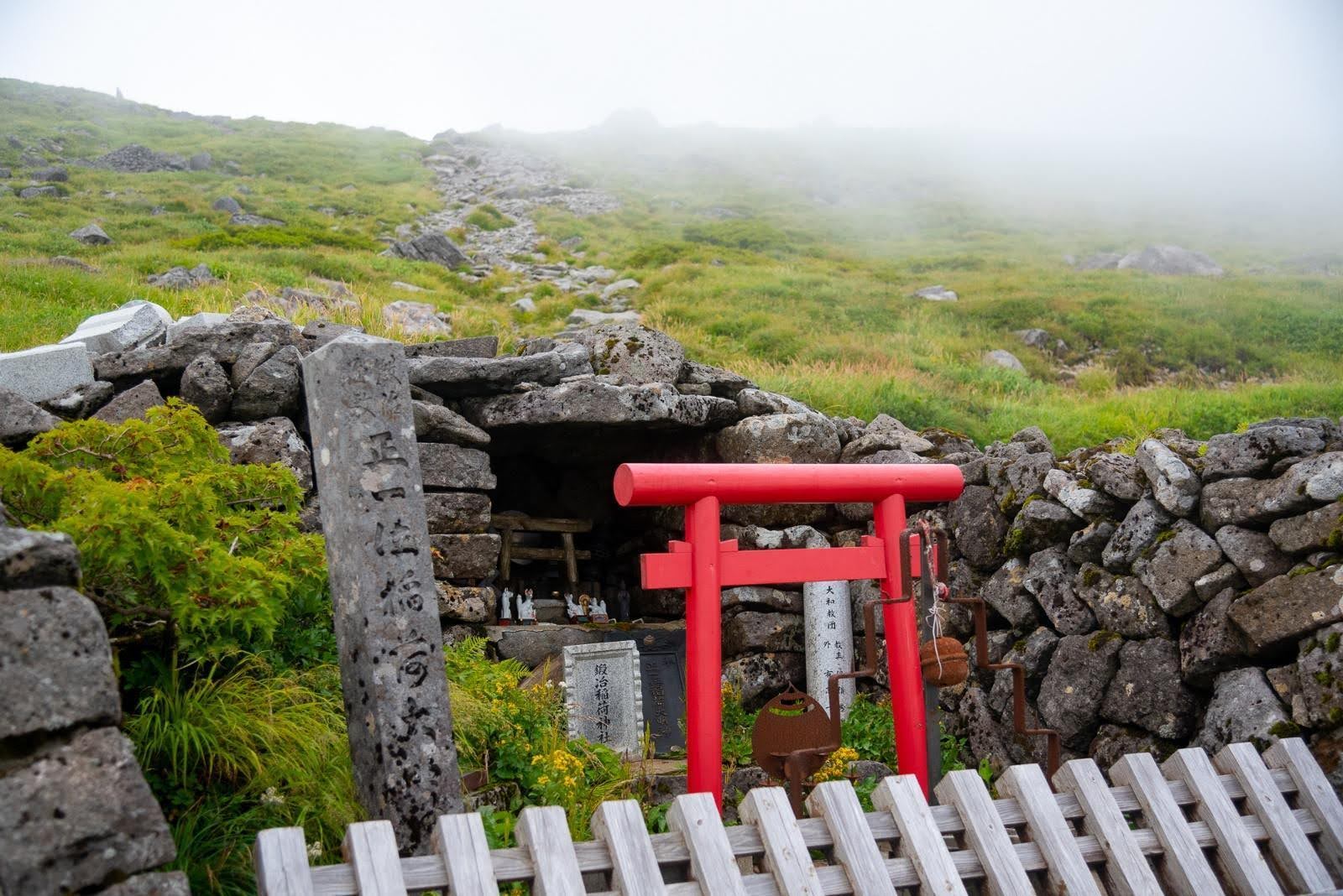
About 100 meters below the summit of Mount Gassan, there was once a forge called Gassan Kaji. Beginning in the Kamakura period (1185–1333), tools and weapons were forged for the monks of Mount Gassan. In the present day, the location serves as a resting area for hikers.
In front of the smithy, there is a small Inari shrine. Inari is one of the most widely venerated dieties among common people, known to answer prayers for abundant harvests.
The Beauty of Midahara’s Alpine Meadows
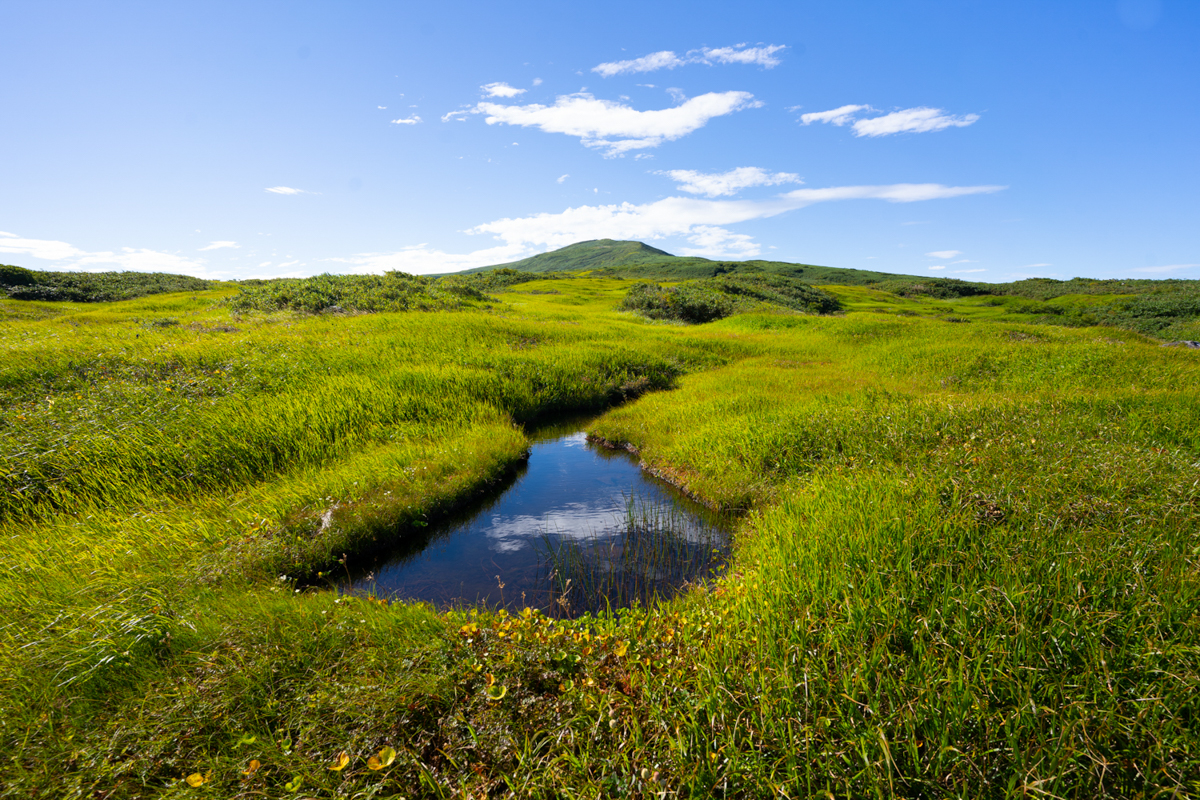
Midahara’s wetland areas, likened to celestial flower fields, are adorned with seasonal alpine flora such as the yellow Nikkō Kisuge and the autumn-blooming Miyama Gentian. In late autumn, the red-tinted vegetation around the ponds resembles golden rice fields, further associating the area with agricultural abundance. Traditionally, the presence and health of certain plants, such as battegusa (horsetail), were used to predict harvest yields, underscoring Midahara’s significance as a sacred field for divine rice cultivation.
Gassan Shrine
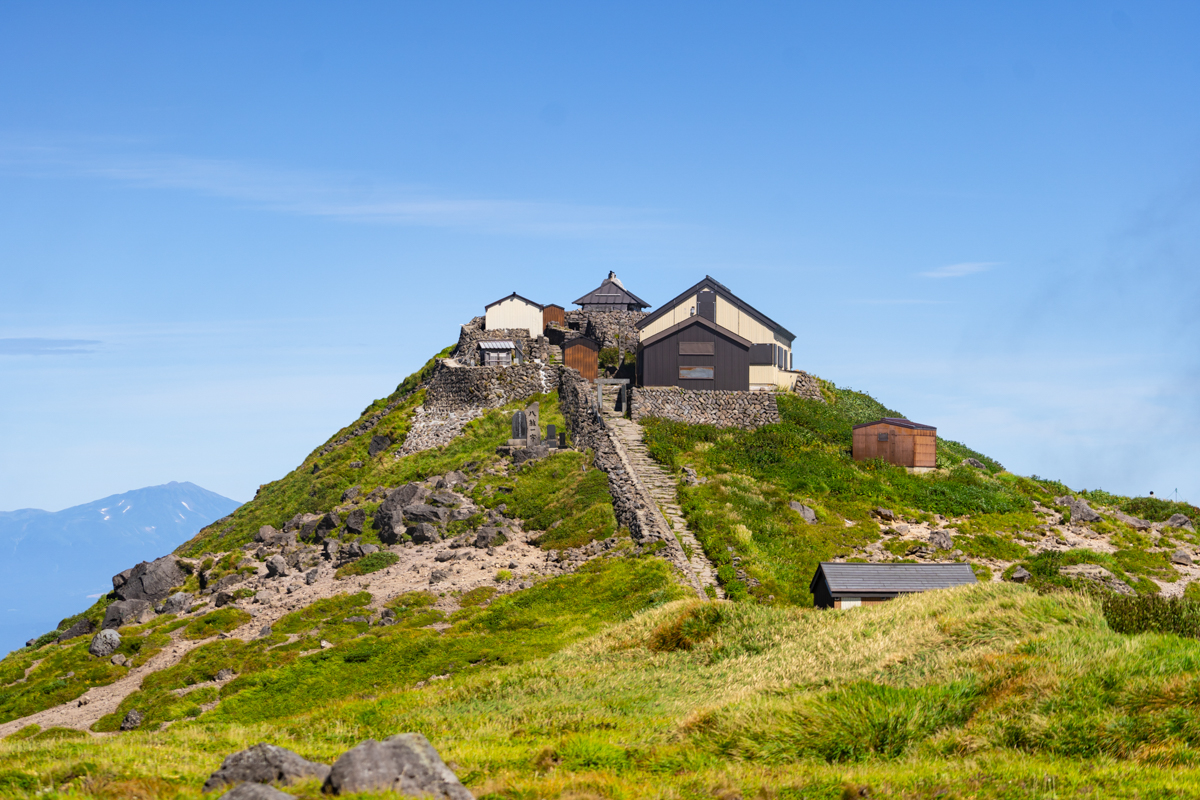
The main shrine of Mount Gassan, perched at the peak of the mountain. Dating back approximately a thousand years, it is listed in the Engishiki Jinmyocho as a prestigious Shinto shrine, receiving high reverence from both the imperial court and common people. It takes about two and a half hours to reach the shrine from Gassan Eighth Station, the mountain’s most popular trailhead.
Please note that it is forbidden to take photos inside of this shrine, please take photos from afar such as the photo above.
Enshrines Deities
| Diety | Associated religion | Divine attributes |
| Tsukuyomi no Mikoto (月読命) | Shinto | Ruler of the night, the world of the dead, and protector agriculture |
| Amida Nyorai (阿弥陀如来, Amitabha) | Buddhist | The principal Buddha of Pure Land Buddhism, and associated with the Diamond Realm. |
Access
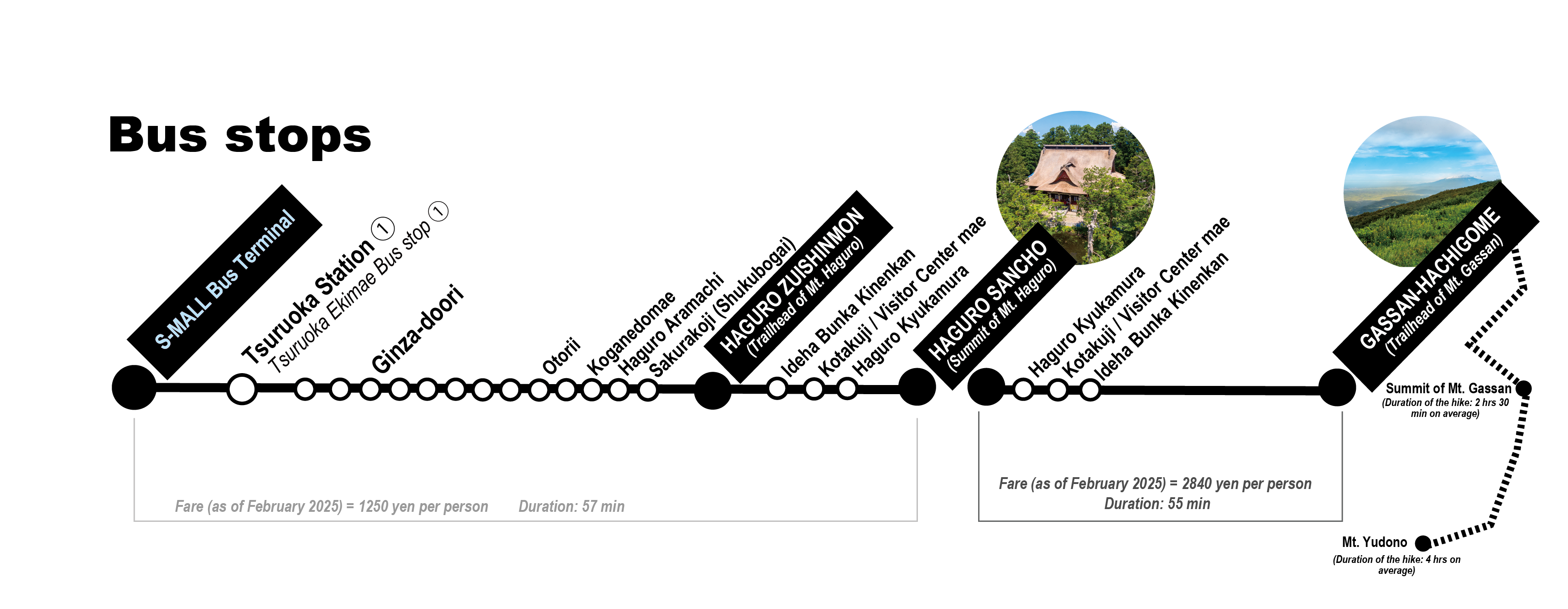
Bus Timetable
Important Reminder
- Mt. Gassan is part of the subalpine zone, weather conditions will strongly affect your visit.
- Do not hike Mt. Gassan in the case of extreme weather.
- Do not hike Mt. Gassan outside of its official hiking season (July 1st to September 15th).
- Wear proper hiking gear and bring provisions.
Weather Considerations
Weather conditions can differ significantly between the mountains and the lower plains. As a general rule, to estimate the temperature at higher altitudes, subtract 6.5°C for every 1,000 meters of elevation gain.
For Example:
If the temperature in Tsuruoka City (roughly sea level) is 22°C, then at the peak of Mt. Gassan (1,984m) can be 22°C – (1.984 × 6.5) ≈ 12.9°C.
The Shonai region, home to the Dewa Sanzan mountains, experiences the highest number of thunderstorms in Japan, especially from late summer to early autumn.
- Avoid hiking Mt. Gassan if thunderstorms are forecasted or occurring.
- If a storm suddenly begins while hiking, seek shelter immediately in a mountain lodge or designated refuge.
Safety Precautions
- Do NOT attempt to hike Mt. Gassan, Mt. Yudono, or the Rokujurigoe Kaido route outside of the official hiking seasons—snow poses a severe hazard, even for experienced hikers.
- In case of heavy rain or strong winds, avoid hiking and consider visiting museums, shrines, or temples instead.
- Carry at least 2 liters of water when hiking Mt. Gassan and refill your bottle before descending either toward Gassan Hachigome or Mt. Yudono.
- In early July, snow may still be present on the trails—carry crampons for a safe ascent.
- Wear a sunhat to prevent sunburn and heatstroke.

